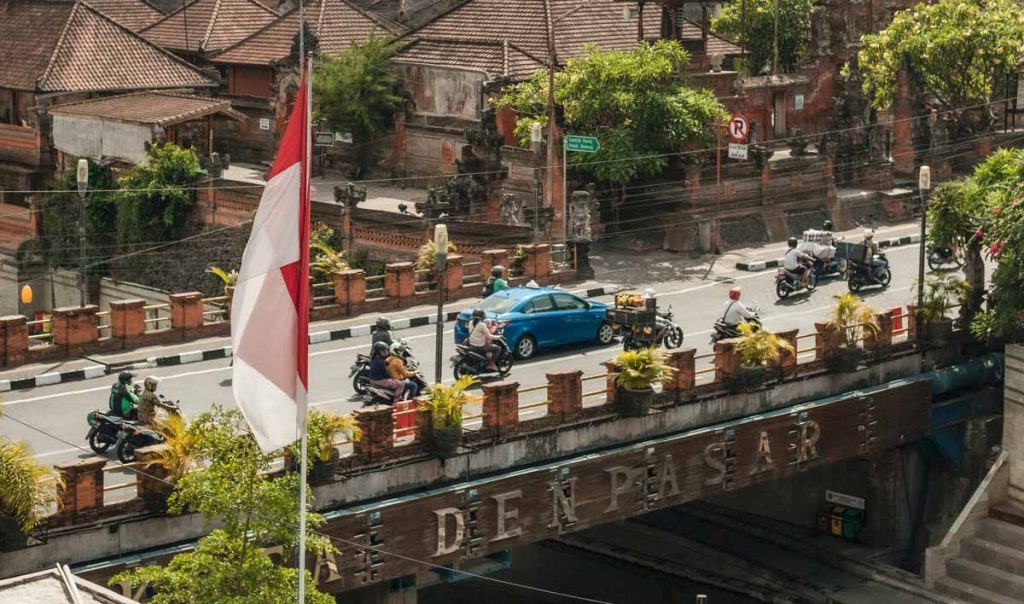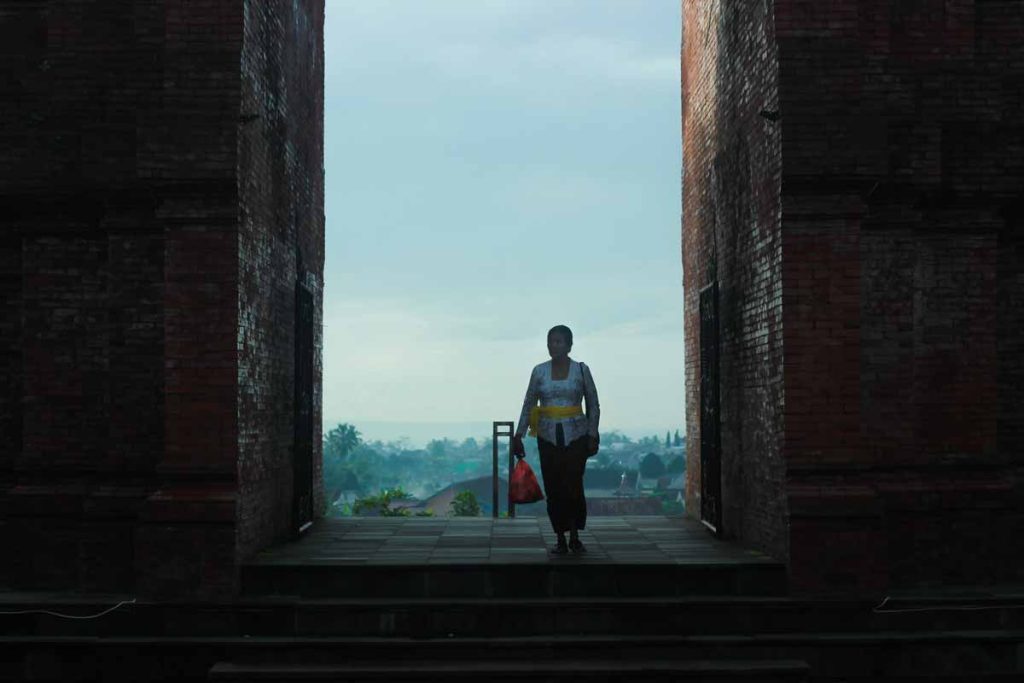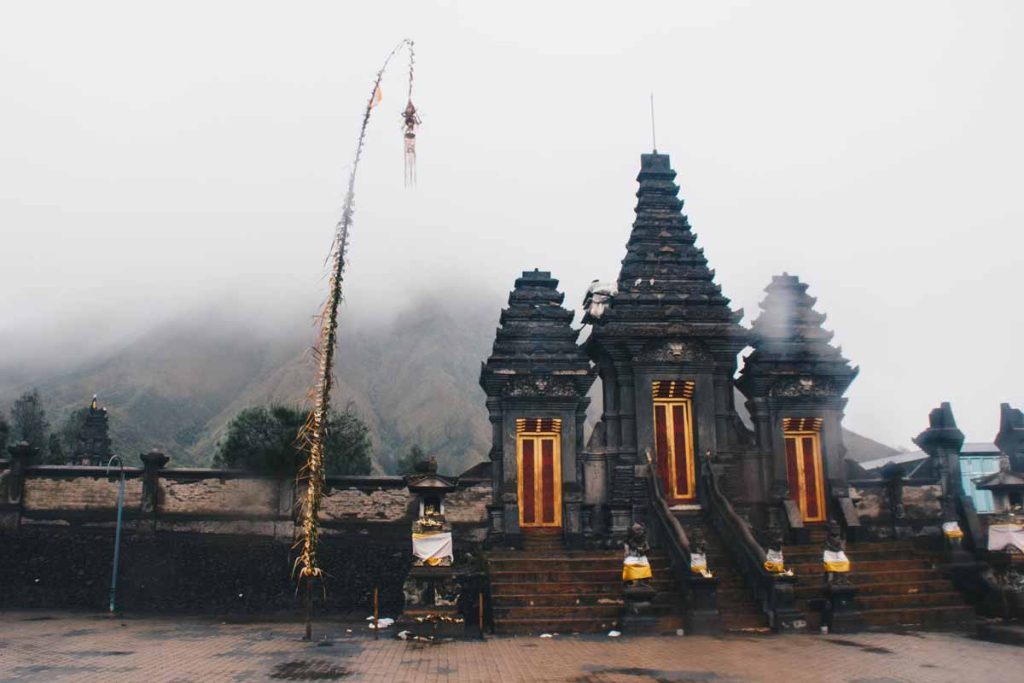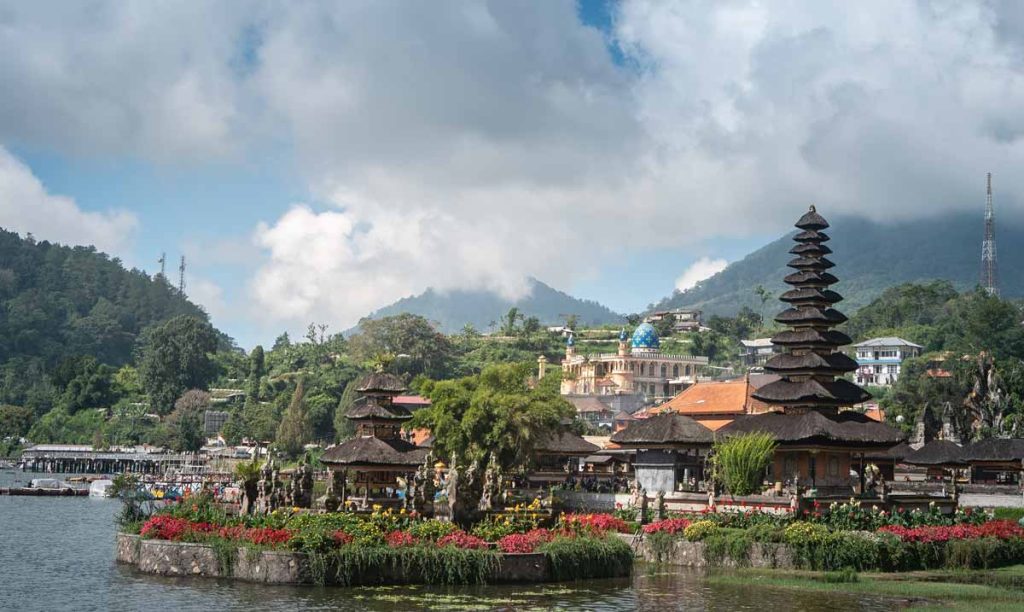Journalist Eric Buvelot and socio-ethnologist Jean Couteau have recorded 20 hours of discussion about changes that have happened in Bali since the 70’s. The conversation was structured and segmented according to many different aspects of Balinese life, mostly from a socio-historical perspective, to trace all the overturning in Balinese mores for the last 50 years, when modernity started to shape new behaviours.
At the core of these changes, the birth of individuality in a communal society and the revolution it implies. The resulting changes have been more significant in 50 years than the ones happening during the previous millennium. At the end of this project, a 16 chapter discussion book was published in 2021 in France by Editions GOPE (Bali, 50 ans de changements – Entretiens avec Jean Couteau) with the purpose of measuring to which extent Bali has morphed in so little time, a work never done before, encompassing all Balinese social matters. The English version (Bali, 50 Years of Changes – A Conversation with Jean Couteau) will follow in 2022 with a translation made by renowned Bali-based American writer Diana Darling and published by Interactive Publications Pty Ltd (Australia). This month, we take a look with them at how Indonesia looks at Bali and vice-versa…

An Indonesian flag flies in the capital city of Denpasar
Eric Buvelot. — How do people envision the relationship with the “other” in Bali?
Jean Couteau. — The Balinese do not emphasise ethnic or even racial otherness. First, the foreigner is not “other”, since they too can become an ancestor, and this applies to everyone, at least in the deep Balinese tradition. Everyone can become an ancestor. There are ancestral shrines addressed to Chinese ancestors, to ancestors from Mecca (Muslims), and even in a few instances to European ancestors, such as castoffs. Yet, within their own community, the Balinese emphasise otherness in status, materialised by the caste system. That said, just because ethno-religious otherness is understated doesn’t mean that it does not exist. The notion of the “exterior” has always existed. “Jawa”, meaning Java, is closely related to “jaba” in Balinese, which means “outside”. I remember in my early years in Bali I was often asked when I was going to return to “Jawa”, the outside world being the world of Java. The concept of jaba people is to be understood as those “outside” the aristocratic castes. Meanwhile, the island of Java has always existed in the Balinese imagination in a complex way. Bali is both connected to and separate from Java.
— And in regard to the two peoples? What is the historical perception?
— The ethnic bond is mythologised. Most Balinese elites claim to be of Javanese origin. In their ancestral temples, there is often a “menjangan seluang”, a carved wooden deer head which marks them as descendants of the Arya1 warriors of Majapahit2 who seized Bali in 1343, an occupation that I would describe as similar to that of the conquest of England by the Franco-Normans in the 11th century. There was a replacement of the elites. It is a point of pride to participate in this link with the empire of Majapahit — which, in the narrative of modern Indonesia and associated mythology, is presented as the empire that unified the entire archipelago3. But alongside the history of the unity of Bali and Java, there is also that of a break between the two islands, with the flight to Bali of a number of Brahmins — Dang Hyang Nirartha4 in particular — who are said to have left Java in the 16th century, when Java was becoming Islamised, and these Brahmins refused Islam.
— This is a story you often hear in Bali even today …
— Yes, it is a legend that gave rise to a myth that Hindus from Java fled in large numbers to Bali to escape from Islam. This only affected a few hundred people at best, individually. There has never been a mass migration from Java to escape Islam.
— What is the position of Bali in the history of the Indonesian archipelago?
— There have been other connections, contacts, and conflicts with the outside world than those with Java. In the 16th and 17th centuries, the Balinese invaded Lombok and Sumbawa, to the east, and Blambangan to the west, a part of East Java that was Islamised relatively late, in the 18th century. There was even an expedition mounted by the kingdom of Mengwi towards the site of Majapahit in Java. Today — to make a leap into contemporary history — some people talk of the re-Hinduisation of Indonesia! It may sound at odds with how Westerners view Indonesia right now, but the Republic of Indonesia offers the legal possibility for Hinduism to spill over into the entire territory of the archipelago. Indeed, ever since the Balinese became prosperous from tourism, they have been opening temples everywhere. The Mandara Giri temple located at the foot of the Semeru volcano in Senduro, East Java, receives tens of thousands of Balinese visitors each year. Islam may be growing in Bali, but Balinese Hinduism is spreading throughout the Indonesian archipelago. It is on this reality that the idea of a possible re-Hinduisation is grafted.

A Pilgrim at Pura Mandara Giri Semeru, Lumajang, East Java 
Pura Luhur Poten – A Hindu Temple in the Bromo-Tengger-Semeru National Park
— Majapahit’s Empire Strikes Back?
— There’s a myth supporting this idea, the myth of Sabdo Palon5, popular in villages in both Bali and Java. In Java it appeals to reluctant Muslims who reject the hardening of Islam and claim that the Majapahit days of grandeur will be back. Some Balinese are aware of the power of this idea and advocate it, even if it’s a story originally imported from Java. It expresses a longing for a national space that would be Hindu rather than Muslim. Such as the Hindu space that existed during the Majapahit days.
— Majapahit invaded Bali in 1343. But warlike conquests is not the first thing that comes to mind when one thinks about Bali. Even if we know that these conquests existed …
— And yet, the Balinese are known to have been very effective henchmen for the Dutch colonisers. Excellent warriors — like Untung Suropati, a former slave and soldier of the East India Company at the end of the 17th century. Arrested for falling in love with a Dutch woman, he turned against his masters and led a famous rebellion. He even established a kingdom in Java, in the regions of Pasuruan, Malang and Probolinggo, which took the Dutch a long time to undo. Today he is considered a national hero. The Balinese who controlled these parts of East Java until the early 18th century eventually became Islamised. Between Islam and Hinduism, in fact, many capillaries have established themselves over time. The notion of kafir (infidel) did not work in this context. Religion did not create ruptures. I think the Muslim classification of the Balinese as “others” came much later. This is a colonial Dutch import. Even when Amangkurat II displaced populations en masse, replacing Hindus from Blambangan with locals from Central Java, in a form of ethnic cleansing of the time, there was no identity tension. People were simply bending to the power of the moment.
— Unlike our contemporary times!
— It’s complicated. In fact, I would say that even now, in the depths of Balinese society, as in Javanese society, ordinary village people of modest education, the wong cilik, do not care about ethno-religious identity. Many Balinese have become Muslim after marrying a Javanese woman; this does not prevent them from celebrating Galungan and Kuningan in Balinese fashion. And with their more or less Muslim wives, from celebrating Lebaran (Eid el-Fitr) in Java. In short, many Balinese and Javanese do not emphasise religious distancing! The same for women who change their religion to follow their husbands. It’s not a problem. However, the more educated people are, the more this religious indifference crumbles, except for the minute cosmopolitan minority.

A mosque stands tall in the background of Pura Ulun Danu Beratan, Bedugul
— Can this become problematic?
— It wasn’t a problem in former times. Until fairly recently, until the mid-20th century, members of a western Balinese village, Banyubiru, near Negara, could convert to Islam while maintaining the banjar system and, in part, ancestor worship. So why were they converting? Because Islam meant trade with Java and represented progress, wealth, the outside world, medicine! In Balinese villages, Islam was also represented by the dukun, with their mantras taken from the Quranic text, and Muslim butchers. Ultimately, Islam had the power of positive otherness, it was the “cargo cult”6 before the arrival of Europeans.
— It’s hard to get Westerners to admit it today, but Islam may represent modernity …
— It should be emphasised that in Indonesia generally, and until recently, these notions of ethnic and religious belonging had been very vague for a long time. But modernity on the move is probably changing this, as we see in our discussions.
Does the feeling of national belonging contradict that of ethnicity and religion?
— Absolutely not. The Balinese took part in the struggle for Indonesian independence. It gave them rights and provided them with networks. The sons of kings, sons of Brahmins and others were sent to Java at the turn of the 20th century for studies, in order to take up positions in the colonial administration. They forged strong links there with the Javanese elites, the families of the sultans of Yogyakarta, Solo and elsewhere. This is how the Balinese reconnected to the myth of Majapahit, and wanted to give it a new reality. These elites immediately thought of themselves as Indonesian. The assertion of Indonesian identity followed at the Sumpah Pemuda7 in 1928.
We must dispel the illusions of Westerners that the Balinese are against Muslims, against national sentiment, against other Indonesians, etc. Westerners who think that the Balinese want independence are deeply misled. Being Balinese is not at all contradictory to being Indonesian. Many deeply Hindu Balinese are in fact hard-leaning nationalists. It is the “Pancasila-ist” state that protects against Islamism and which enables Hinduism be present in Sumatra, Borneo and elsewhere in Indonesia.
Is there separatism?
Some in the West will say that Indonesia is a Muslim construct. No, really! …Indonesia is first and foremost a multicultural construct with religion as one of its basic principles. Is it solid? Brittle? I do not know. However, I tend to think it’s solid, because of Indonesia’s inherent cultural flexibility.
Footnotes:-
1. Arya: group of clans descended from the warriors of Majapahit. Foundation of the Balinese aristocracy.
2. Majapahit: kingdom located in the eastern part of Java. Founded in 1292, it reached its peak in the 14th and 15th centuries. Many of the Balinese nobility trace their origins to Majapahit.
3. There are also stories of resistance against Majapahit occupation, in particular that of Kebo Iwo,a giant whom the Javanese could only defeat by deceit.
4. Dang Hyang Nirartha, also known as “Pedanda Shakti Wawu Rauh”, was a 16th-century wandering Shivaite priest. He is the founder of the brahmana Shaivapriesthood in Bali.
5. Sabdo Palon was an advisor to King Brawijaya V, the last Buddhist monarch of the Majapahit Empire in Java.
6. Cargo cult: originally a Melanesian belief system based on the expectation of the arrival of ancestral spirits on ships full of food and other goods. Today, a description of how a community assimilates contributions from outside into its own culture.
7. Sumpah Pemuda: The “Youth Oath” is the founding episode of the Indonesian independence movement. It represents the first declaration of values governing the founding of the future republic of Indonesia.









